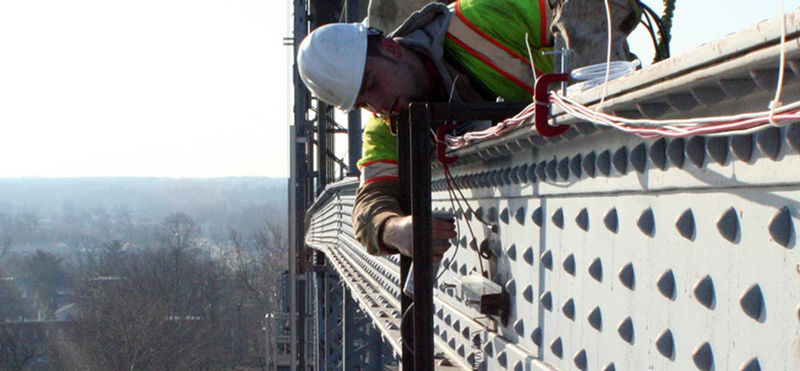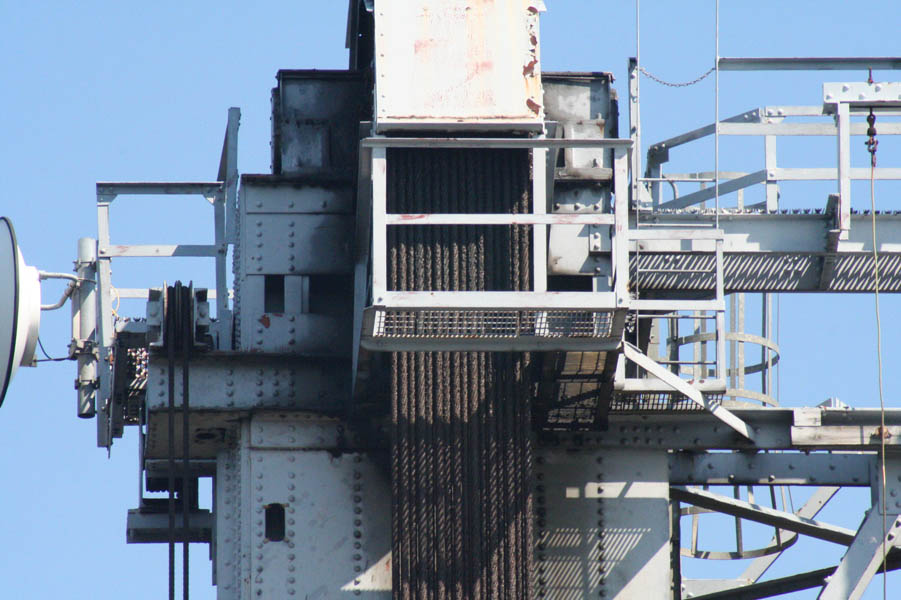
Structural Health Monitoring and Identification at the Burlington-Bristol Bridge
Dates: September 2007 – March 2010 (renewable)
Location: Bristol, PA and Burlington City, NJ
PIs: F.L. Moon, A.E. Aktan
Researchers: N. Dubbs, J. Weidner, J. Prader, Y. Zhou, J. Zhang,
Partners: Pennoni Associates, Inc.
Sponsor: Burlington County Bridge Commission
Executive Summary
In 2007, shortly after the collapse of I-35W, DI3 formed a close partnership with Pennoni Associates, Inc. and the Burlington County Bridge Commission to aid in the preservation and renewal of the county’s long-span bridges. As part of the long term project, a structural health monitoring system has been implemented on the Burlington-Bristol Bridge. The BBB is a signature long-span movable truss bridge across the Delaware River connecting Bristol, PA and Burlington City, NJ. The bridge is 3,144 ft in total length with a 540 ft main-span through truss that lifts 75 ft vertically to accommodate large ships. The age and importance of the structure require additional care to ensure its future performance, as it represents a critical link across the Delaware River for commerce and mobility. The health monitoring system will aid in the operational, maintenance, and engineering needs of the structure.
Project Description
To assist in the design and development of the structural health monitoring (SHM) system, a detailed 3D finite element model of the entire span was constructed and error screened using best practices. In order to ensure that the model was reasonable in terms of its characterization of the structure, an in-depth ambient vibration survey was carried out and the fundamental natural frequencies and modeshapes were identified for each of the spans. The model was then correlated with this information and used as the basis to identify the critical structural responses that should be tracked with the SHM system. To date, three individual components of the SHM system have been installed on the structure and are providing real time information: (1) critical member live load and temperature induced strain monitoring, (2) laser-based height monitoring system and video capture of bridge seating and ship passage, and (3) a bearing reaction force monitoring system (installed in 14 locations). The live load strain monitoring system is capable of measuring the response in critical elements to triggered traffic events and temperature gradients due to daily and seasonal variations in temperature. The laser-based height monitoring system tracks the positions of the movable vertical lift span during its operation to provide operators with precise clearances for safe ship passage. In addition, this system provides the operator with live video feeds to view the bridge seating and ship passage (all of which are archived) The bearing reaction monitoring system consists of a unique design that includes a series of high capacity load cells within each bearing which can measure both the axial forces and bi-directional bending moments imparted on the bearings by live load and temperature events. This system not only serves to track a key performance indicator (dead load force distribution) but is also serves as a highly reliable weigh-in-motion system to characterize traffic loads/truck weights.





























